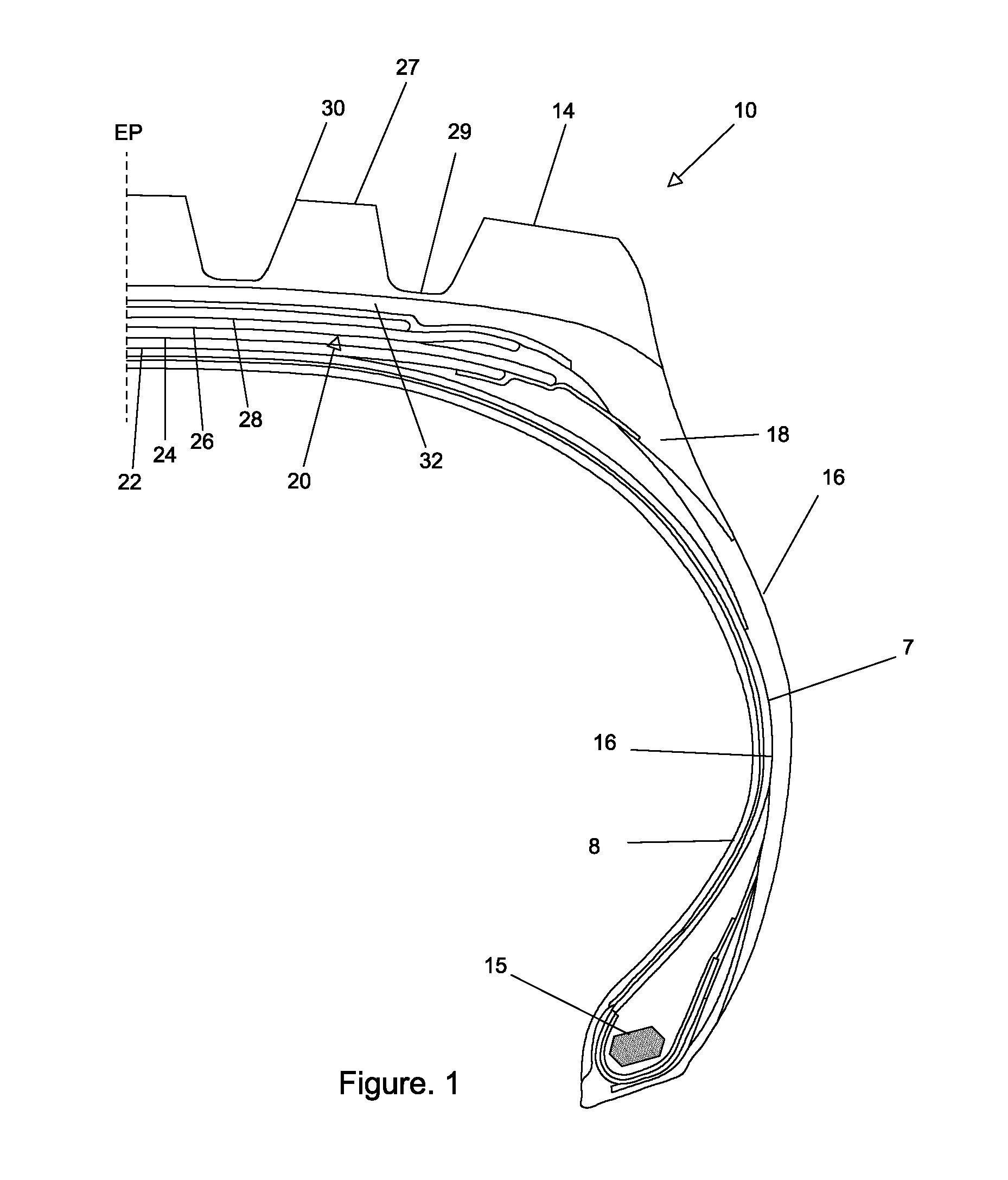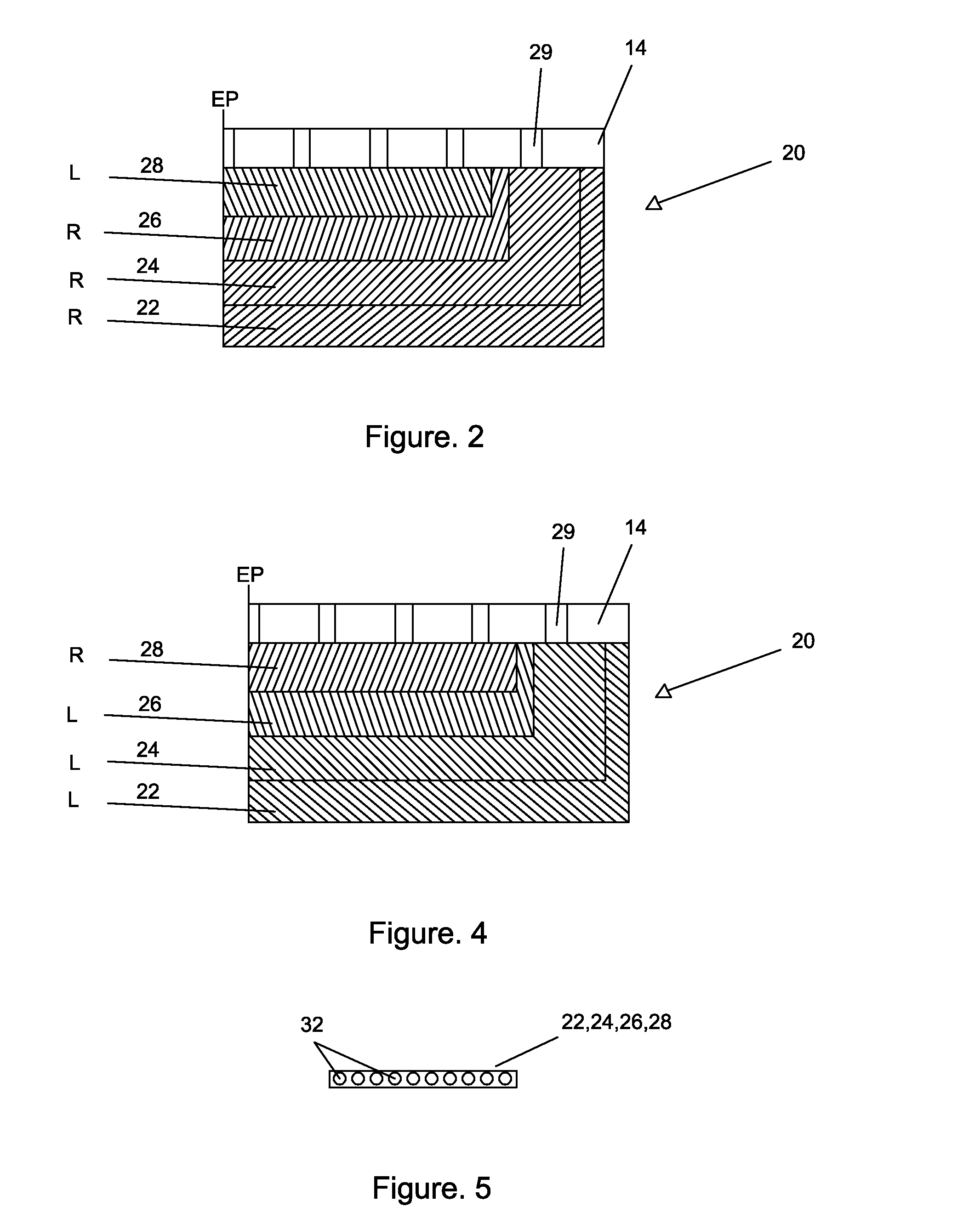Pneumatic tire with improved crown durability
a pneumatic tire and crown technology, applied in the field of pneumatic tires, can solve the problems of reducing the durability of belt edge durability and crown durability, the tire is prone to significant heat buildup in the crown area, and the pneumatic tire is used in severe service applications of heavy vehicles that operate at slow speeds, so as to achieve the same overall tire weight and improve the durability and stiffness of the crown
- Summary
- Abstract
- Description
- Claims
- Application Information
AI Technical Summary
Benefits of technology
Problems solved by technology
Method used
Image
Examples
Embodiment Construction
[0033]With reference to the FIGS. 1 and 3, a pneumatic tire 10 includes a carcass 12, a ground-engaging tread 14, a sidewall 16, and a shoulder 18 defined at the juncture between the sidewall 16 and the tread 14. The tread 14 has a ground contacting surface 27 separated by grooves 29. When mounted on a vehicle, the tread 14 furnishes traction and tire 10 contains a fluid that supports the vehicle load. The tire carcass 12 has one or more carcass plies 7 extending from the bead 15 under the belt structure 20 to the opposite bead 15. Radially inward of the at least one ply 7 is an air impervious inner liner 8. Pneumatic tire 10 is understood to have mirror symmetry for reflection about an equatorial plane EP bisecting tire 10 so that the following description is understood to apply to the full tire width. Pneumatic tire 10 has a footprint (FP), as described hereinabove.
[0034]Arranged radially between the carcass 12 and the tread 14 is a belt package 20, generally indicated by referenc...
PUM
| Property | Measurement | Unit |
|---|---|---|
| cord angle | aaaaa | aaaaa |
| angle | aaaaa | aaaaa |
| angle | aaaaa | aaaaa |
Abstract
Description
Claims
Application Information
 Login to View More
Login to View More - R&D
- Intellectual Property
- Life Sciences
- Materials
- Tech Scout
- Unparalleled Data Quality
- Higher Quality Content
- 60% Fewer Hallucinations
Browse by: Latest US Patents, China's latest patents, Technical Efficacy Thesaurus, Application Domain, Technology Topic, Popular Technical Reports.
© 2025 PatSnap. All rights reserved.Legal|Privacy policy|Modern Slavery Act Transparency Statement|Sitemap|About US| Contact US: help@patsnap.com



